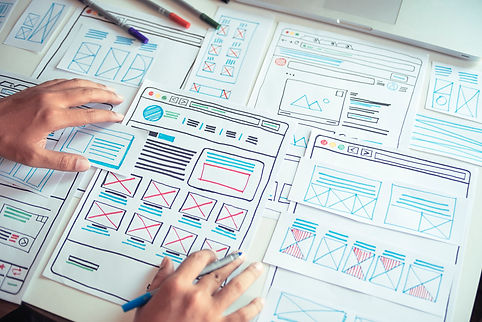In today’s fast-paced world, where software distribution is continuous and user experience is essential, innovation requires constant iteration and quick delivery. My design process is flexible and tailored to each project, focusing on understanding users, validating assumptions, creating solutions, and refining them until we achieve the desired outcomes.

Step 1: Understand and Validate the Problem
Before jumping into solutions, it's essential to deeply understand the problem we're solving. I start by gathering insights through stakeholder interviews, market research, customer usage data, and any existing analytics. This step also involves listing known assumptions and prioritizing them by risk, which provides a foundation for future research and discovery.

Step 2: Generative User Research
To validate our assumptions and gain a deeper understanding of the problems users face, I conduct generative research. This research is an essential part of the process and is carried out with close involvement from the entire team. I encourage team participation to maximize insights and efficiency, using methods such as:
-
Data Mining and Analysis
-
Diary/Camera Studies
-
Email Surveys
-
Focus Groups
-
Open Card Sorting
-
Stakeholder Interviews
-
User Interviews

Step 3: Create a Shared Understanding of Users & Pain Points
After collecting data, we debrief as a team to align on design requirements that meet business goals. This stage is about synthesizing the research into a clear understanding of our users, their pain points, and validating our initial assumptions. Tools I use here include:
-
Personas
-
Journey Maps
-
Empathy Maps
-
Scenarios

Step 4: Design the Functional & Data Framework
Before diving into wireframes, I focus on defining the functional and data frameworks needed to support the design. Solving high-level problems early on saves significant time down the road. Key elements in this phase include:
-
Flow diagrams
-
Mind map
-
Venn diagrams

Step 5: Design the Interaction Framework
Once the functional framework is defined, the next step is creating the interaction framework. I often start with high-level concepts on a whiteboard or tablet and involve the entire team in the process. This collaboration ensures that developers have the right foundation to begin building data schemas and app frameworks. In parallel, product management can start defining epics and creating high-level roadmaps.
I focus on defining the Key Path Scenarios first, ensuring the core interactions are clear before addressing edge cases.

Step 6: Concept Refinement
In this phase, I transition into interaction design, starting with low-fidelity wireframes and progressively adding more detail as I gather feedback from users and team members. The goal here is to explore a variety of ideas and validate them quickly. This iterative process is key to delivering effective solutions. Tools used include:
-
Wireframes
-
Validation Scenarios
-
Mockups
-
Rapid Prototypes
-
In-depth Prototypes

Step 8: Evaluative Research
Evaluative research runs in tandem with concept refinement. It’s a constant cycle of testing and validating design ideas. Some of the methods I employ are:
-
5-second test
-
A/B or Multivariate Testing
-
Closed Card Sorting
-
Usability Testing

Step 8: Working with Developers on Implementation
Having spent time as a front-end developer early in my career, I deeply understand the technical side of the design process. I collaborate closely with developers to ensure designs are implemented correctly, suggesting libraries, troubleshooting issues, and refining details as needed. In situations where developers are remote, I provide clickable prototypes to help them visualize and understand the experience.



